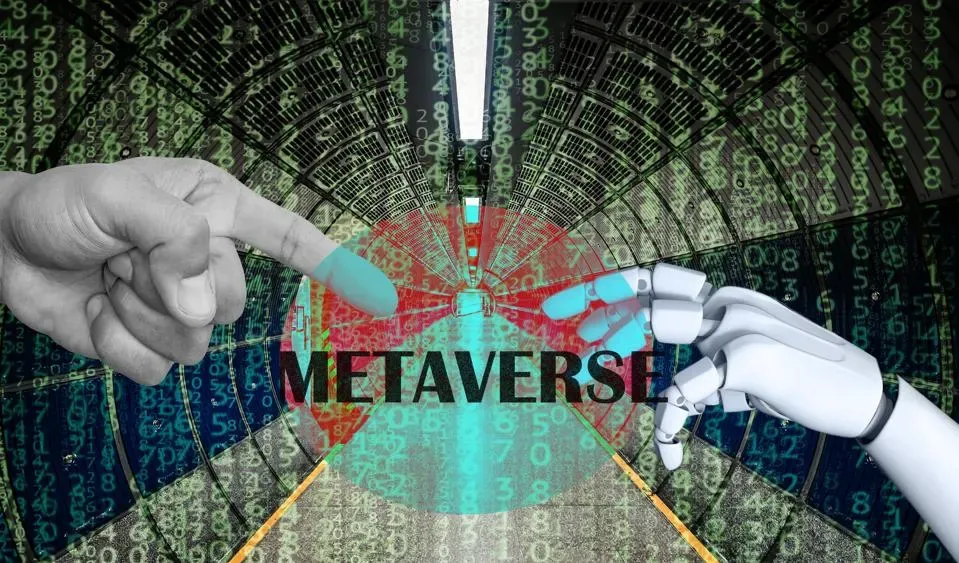

The concept of the metaverse has been gaining traction in recent years, capturing the imagination of tech enthusiasts and skeptics alike. Let’s explore this topic in more detail with Papa’s Freezeria below, as we delve into the virtual realms that promise to revolutionize how we interact, work, and play. The metaverse represents a bold vision of the future, where digital and physical realities converge, offering unprecedented opportunities for connection and creativity. As we stand on the cusp of this technological frontier, it’s crucial to understand what the metaverse entails and why it holds such significance for our collective future.
The metaverse is often described as a virtual shared space, created by the convergence of virtually enhanced physical reality and physically persistent virtual space. It’s a collective virtual shared space, merging physical and digital realities, where users can interact with each other and digital objects in real-time. This concept goes beyond traditional virtual reality experiences, aiming to create a persistent, interconnected network of 3D virtual worlds.
At its core, the metaverse is envisioned as an evolution of the internet, moving from 2D webpages to immersive 3D environments. It’s a place where users can work, play, socialize, and engage in various activities through digital avatars. The metaverse isn’t owned by a single company or entity; instead, it’s expected to be a collaborative effort involving multiple platforms and technologies.
The idea of the metaverse isn’t entirely new. Science fiction has long explored the concept of virtual worlds, with works like Neal Stephenson’s “Snow Crash” and Ernest Cline’s “Ready Player One” popularizing the idea. However, recent advancements in technologies such as virtual reality (VR), augmented reality (AR), artificial intelligence (AI), and blockchain have brought us closer to realizing this vision.
Key components of the metaverse include:
. Persistent virtual worlds that continue to exist even when users are offline
. Real-time interactions between users and digital objects
. A sense of presence and immersion through advanced VR and AR technologies
. A digital economy where users can create, own, and trade virtual assets
. Interoperability between different platforms and virtual spaces
As we continue to develop and refine these technologies, the metaverse has the potential to transform various aspects of our lives, from how we work and socialize to how we consume entertainment and conduct business.
Read more: Cybersecurity Tips for Entrepreneurs and Freelancers
Creating the metaverse requires a convergence of various technologies, each playing a crucial role in bringing this virtual world to life. Understanding these building blocks is essential to grasp the full potential and challenges of the metaverse.
At the forefront of metaverse technology are virtual reality (VR) and augmented reality (AR). VR immerses users in fully digital environments, while AR overlays digital information onto the physical world. These technologies are fundamental to creating the immersive experiences that define the metaverse.
VR headsets like the Oculus Quest and HTC Vive are already providing users with impressive virtual experiences. As these devices become more sophisticated and accessible, they’ll play a crucial role in how we access and interact within the metaverse. AR, on the other hand, is being developed through devices like smart glasses and smartphone applications, offering a blend of digital and physical realities.
The challenge lies in making these technologies more comfortable, affordable, and capable of rendering complex virtual environments with minimal latency. As VR and AR continue to evolve, we can expect more seamless and natural interactions within virtual spaces.
Artificial Intelligence (AI) and Machine Learning (ML) are essential for creating dynamic, responsive virtual environments. These technologies power everything from realistic non-player characters (NPCs) to sophisticated language processing systems that enable natural communication within the metaverse.
AI algorithms can analyze user behavior to personalize experiences, create adaptive environments, and facilitate complex simulations. Machine learning models can improve over time, making virtual interactions more natural and intuitive. As AI continues to advance, we can expect virtual worlds to become more intelligent, responsive, and capable of hosting complex social and economic systems.
Blockchain technology and cryptocurrencies are set to play a crucial role in the metaverse economy. Blockchain provides a decentralized, secure way to verify ownership of digital assets, enabling the creation of unique virtual items and properties. This technology underpins the concept of non-fungible tokens (NFTs), which are already being used to represent ownership of digital art, virtual real estate, and other assets in virtual worlds.
Cryptocurrencies, built on blockchain technology, offer a means of conducting transactions within the metaverse. They enable seamless cross-platform exchanges and can power complex economic systems within virtual worlds. As the metaverse evolves, we can expect to see more sophisticated economic models emerge, blurring the lines between virtual and real-world economies.
The metaverse will require robust internet infrastructure to support millions of simultaneous users interacting in real-time. High-speed, low-latency networks like 5G and future 6G technologies will be crucial in delivering seamless, immersive experiences. Cloud computing will play a vital role in processing and rendering complex virtual environments, allowing users to access the metaverse from various devices without the need for powerful local hardware.
As these technologies continue to advance, we can expect more sophisticated and accessible metaverse experiences. The challenge lies in ensuring that this infrastructure is scalable, reliable, and capable of supporting the massive data requirements of a fully realized metaverse.
The metaverse has the potential to revolutionize numerous aspects of our lives, from how we work and socialize to how we consume entertainment and conduct business. Understanding these potential impacts is crucial for both individuals and organizations looking to prepare for this digital future.
The metaverse could significantly change how we work and collaborate. Virtual offices and meeting spaces could replace traditional physical workplaces, allowing for more flexible and inclusive work environments. Imagine attending a board meeting as a holographic projection or collaborating on a 3D model with colleagues from around the world in real-time.
Remote work, which has already seen a significant boost due to recent global events, could be transformed by metaverse technologies. Instead of video calls, we might have immersive virtual meetings where participants feel truly present. This could lead to more engaged and productive remote work experiences, potentially reshaping the global workforce and reducing the need for physical office spaces.
Moreover, the metaverse could enable new forms of work and entrepreneurship. Virtual economies within the metaverse could create opportunities for digital artisans, virtual real estate developers, and other professions we haven’t even imagined yet. The ability to create and sell virtual goods and services could open up new revenue streams and business models.
Read more: Why Cloud Computing Is Essential for Modern Companies
Education and training are areas where the metaverse could have a profound impact. Virtual classrooms could offer immersive learning experiences that go beyond traditional textbooks and lectures. Students could explore historical events in virtual recreations, conduct complex scientific experiments in safe virtual labs, or practice surgical procedures on digital patients.
The metaverse could also democratize access to education, allowing students from anywhere in the world to attend virtual lectures and interact with top educators. This could help bridge educational gaps and provide opportunities for lifelong learning.
In professional training, the metaverse could offer realistic simulations for high-risk or complex tasks. From pilot training to emergency response scenarios, virtual environments could provide safe, repeatable training experiences that closely mimic real-world situations.
The metaverse has the potential to transform how we socialize and consume entertainment. Virtual concerts, where millions can attend simultaneously, have already shown the potential for large-scale virtual events. In the metaverse, these experiences could become even more immersive, allowing fans to interact with performers and each other in ways never before possible.
Social interactions could extend beyond video calls to fully immersive experiences. Friends separated by distance could meet in virtual cafes, explore digital art galleries together, or even go on virtual adventures. This could lead to new forms of social media and communication platforms that prioritize presence and shared experiences.